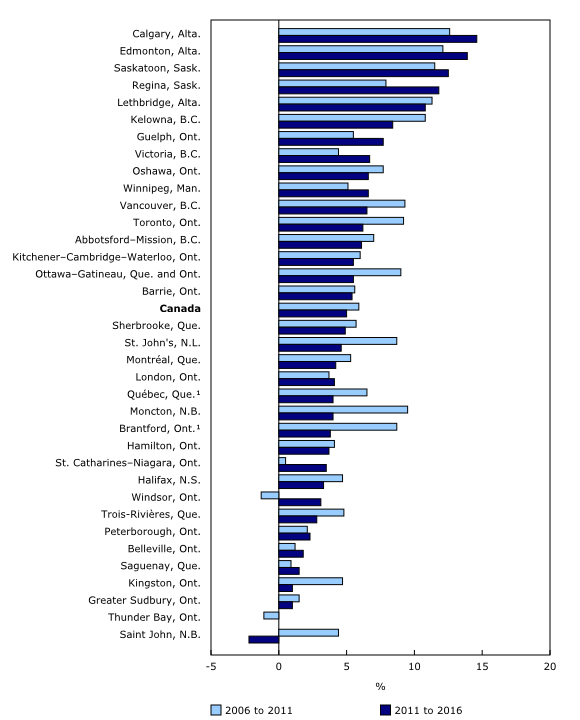
It’s no surprise that Toronto, Montreal, and Vancouver are Canada’s largest cities.
According to the newly release 2016 Census, these three metropolitan areas account for 35.5 percent of the population here in the true north strong and free – though this is not where Canada’s population is growing the fastest.
Toronto tops the list with 5,928,040 inhabitants, followed by Montréal with 4,098,927 inhabitants, and Vancouver with 2,463,431 inhabitants.
It’s a milestone for Montréal which for the first time in census history surpassed 4 million inhabitants.
Despite taking top spots, Canada’s most populated metropolitan areas are actually slowing in their growth. In Toronto, the population grew just 6.2 percent, while the population in Montréal rose 4.2 percent, and Vancouver’s population went up 6.5 percent – all of which hover around the national average of 5%.
Population growth rate among census metropolitan areas in Canada
2006 to 2011 and 2011 to 2016, ranked by percentage growth in 2016

Census of population, Highlights Tables (98-402-X2016001)
It’s cities in the Prairie provinces that are growing the fastest.
Calgary usurped the Ottawa–Gatineau area (population 1,323,783) to come in fourth on the list of most populous Canadian cities with 1,392,609 inhabitants, up 14.6 percent since the previous 2011 census.
Meanwhile, in Edmonton the population grew 13.9 percent, Saskatoon grew 12.5 percent, Regina is up 11.8 percent, and the population of Lethbridge rose 10.8 percent.
2016 Census: 150 years of urbanization in Canada
See how Canada’s population has changed since 1871

